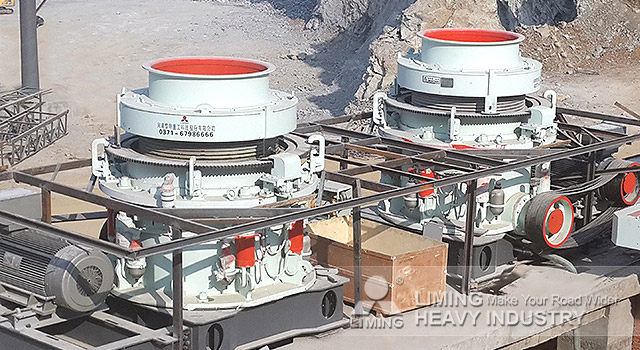The cone crusher is a popular and versatile crushing equipment used in the mining, construction, and aggregate industries. Its basic design allows for efficient crushing of various materials, making it a reliable choice for crushing operations. In this response, we will discuss the application and design aspects of cone crushers.
Application of Cone Crusher:
Cone crushers are primarily used for secondary and tertiary crushing stages in the mining and aggregate industries. They are suitable for crushing a wide range of materials, including hard and abrasive ones. The main applications of cone crushers include:
Ore Mining: Cone crushers are commonly used in the mining industry to crush ore into smaller sizes for further processing. They can handle both hard and soft ore materials, making them a versatile choice for various mining operations.
Construction Aggregates: Cone crushers are also widely used in the construction industry to produce aggregates such as crushed stone, sand, and gravel. These aggregates are essential in the construction of roads, buildings, and other infrastructure projects.
Quarrying: Cone crushers are commonly employed in quarries to break down large rocks into smaller, more manageable sizes. This facilitates the extraction of valuable minerals or stone products from the earth.

Design of Cone Crusher:
The design of a cone crusher plays a crucial role in its performance and efficiency. Here are some key design aspects of a cone crusher:
Crushing Chamber: The crushing chamber is the space where the material is fed and crushed. It consists of a concave (fixed outer ring) and a mantle (movable inner ring). The shape and size of the crushing chamber affect the production capacity, particle size distribution, and energy consumption of the crusher.
Eccentric Motion: Cone crushers operate through an eccentric motion of the main shaft. The eccentricity determines the crushing force and the throw distance of the mantle. A higher eccentricity leads to more crushing force and finer product size, while a lower eccentricity results in coarser product size.
CSS Adjustment: The closed side setting (CSS) is the smallest distance between the mantle and concave at the bottom of the crushing chamber. It controls the product size and throughput of the crusher. Cone crushers feature mechanisms to adjust the CSS, allowing operators to optimize the performance according to the desired product specifications.
Power and Drive System: Cone crushers are usually powered by electric motors or diesel engines. The power and drive system provide the necessary energy to operate the crusher. They also influence the crusher’s capacity, efficiency, and reliability.
Safety Features: Cone crushers are equipped with various safety features to protect the operator and the equipment. These may include hydraulic systems for tramp iron relief, automatic overload protection, and emergency stop buttons.
Maintenance and Accessibility: A well-designed cone crusher should facilitate easy maintenance and servicing. Components such as the mantle and concave should be accessible for replacement or adjustment. Additionally, features like automatic lubrication systems can improve the longevity and reliability of the crusher.
In conclusion, cone crushers are versatile machines that find extensive applications in mining, construction, and aggregate industries. Their design incorporates various factors such as the crushing chamber, eccentric motion, CSS adjustment, power and drive system, safety features, and maintenance accessibility. These design aspects collectively contribute to the cone crusher’s efficiency, productivity, and overall performance.
